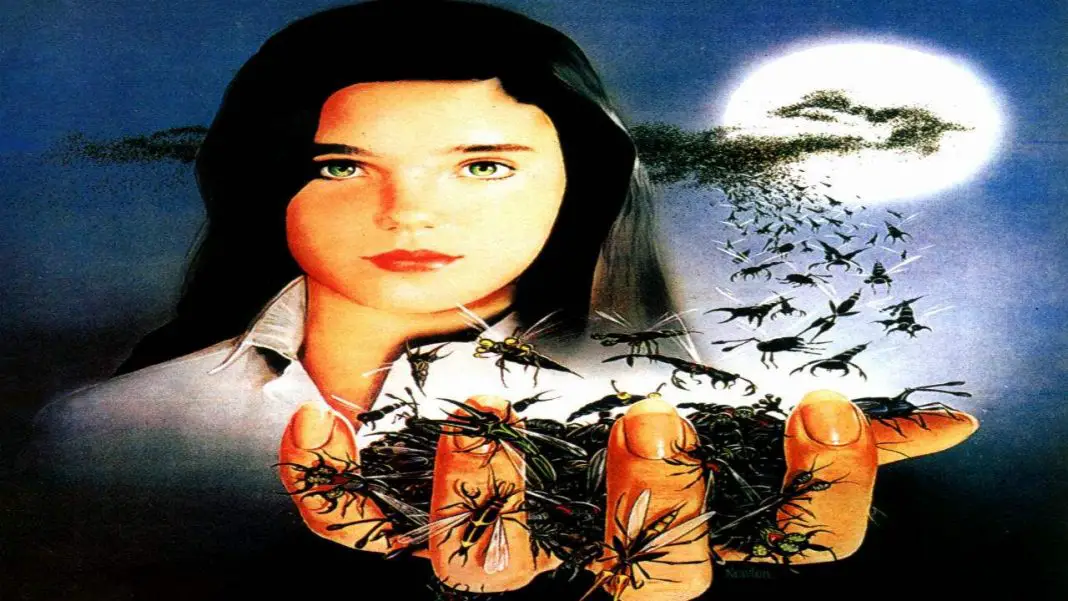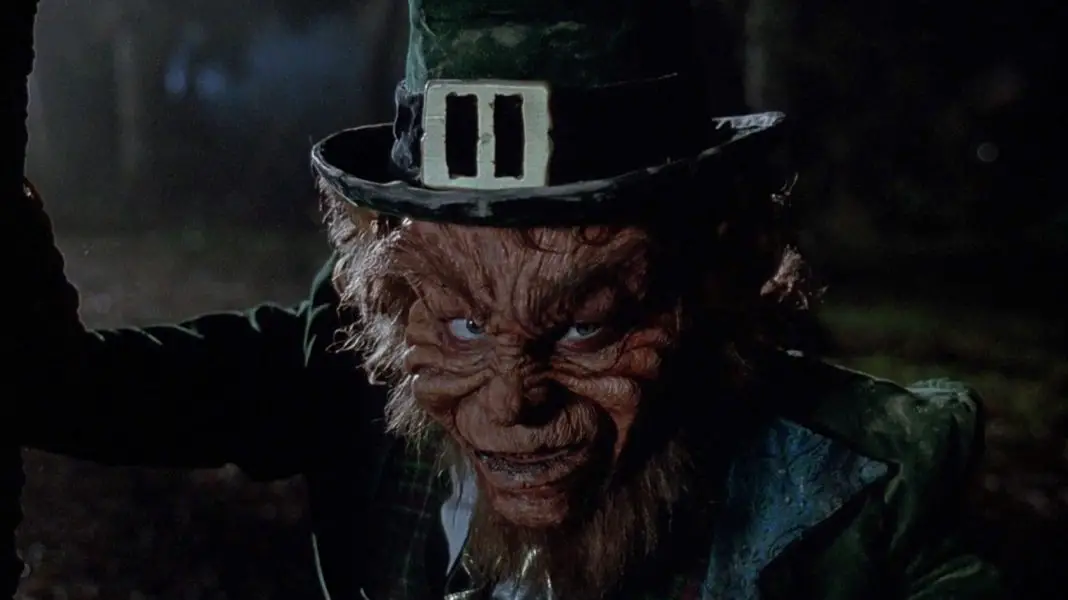Larry Cohen is a filmmaker who just does not get the credit he deserves. His pictures are all too often labeled as B-Movies. But while they may be campy, it’s a very intentional camp. He has a unique sense of humor that becomes a through line between all of his features. He injects everything he does, from stories about mutant babies to winged serpents, with a dose of steady-handed social commentary. I think this is never more true than it is in The Stuff. In many ways, this is Cohen’s most clear, most resonant movie. It certainly has a following and I think people are starting to come around to it, but it’s still one that goes largely unnoticed in the horror genre as a whole.
In typical Larry Cohen tradition, The Stuff stars Michael Moriarty as a protagonist who’s not much of a hero. They call him Mo because when people give him money, he always wants mo’. But he’s kind of the protagonist that a movie like this needs. He’s representative of greed, but it’s a different kind than the corporate greed he finds himself entrenched in as the feature goes on.
There’s a lot of humor to the movie and as it goes on it begins—like many of the best of the ‘80s—to feel like a sendup of ‘50s classics like Invasion of the Body Snatchers and The Blob. Moe gets himself an eccentric, wacky sidekick in Chocolate Chip Charlie. And it’s kind of interesting that the most sympathetic character in the entire film is named after a food, especially one that is not very good for you.
And that’s what The Stuff is really about, right down to its core. It’s a food industry horror film and as such might just be one of the best of all time. This is about something that is dug up from the ground, clearly alien in nature. There’s no possible way that it could be good for you, that it’s something a human being should even think about ingesting.
But it tastes good. And it’s cheap. And it looks like the inside of a Twinkie. So of course it’s packaged up and shipped to stores to become America’s newest, biggest fad. People literally can’t get enough of it, because enough is never enough, as the slogan goes.
There’s great commentary at work here, not just on the food industry as a whole, but the obsession with processed foods that was boiling over in the 1980s. That’s what I think Cohen was trying to focus on with the film. This is an even more pointed take on consumerism than George Romero’s Dawn of the Dead.
What’s interesting, though, is that if you look at the family at the more-or-less center of the piece, it’s the kid who’s the only one to see that something out of the ordinary is going on. Normally, in the case of packaged junk food, it’s the kids who are the ones that always eat it up and don’t care about what’s inside of it. But people at the time were swept up in the convenience of something they didn’t have to make, put thought into or prepare on their own. And that’s something that hasn’t gone away at all. All we’ve done differently since is try to label things as healthier options when many of them are anything but.
There’s also a recurring theme of children in horror as being intuitive, picking up on things that adults miss. It’s most famously present in the works of Stephen King, but it’s present in Cohen’s films as well, particularly The Stuff and Return to Salem’s Lot. Both deal with kids who eventually have to start acting and talking older than they really are, essentially becoming the adults when the actual adults prove to be incapable of handling the situation on their own.
Also See: Five Cartoons That May Have Sparked Your Interest in Horror

The Stuff also transitions really well into deeper levels of absurdity as the action ramps up. Each act almost feels like a different type of movie. The first act is a sort of Body Snatchers piece with those who can’t get enough of the stuff being taken over and attempting to turn everyone else that they know. The effects of the stuff are horrifying, too. But even after seeing it, people don’t care. They don’t care what it does. Even if what it does is take over the mind before tearing the body apart from the inside out. It tastes good, they like it, they can have as much as they want and still be hungry, and that’s what matters.
The second act is more of a classic creature feature. The stuff itself really becomes the monster once they start coming into contact with the actual source. Once the monster sort of reveals itself, Cohen just goes for it and the infected people start ballooning into a mass of monstrous marshmallow fluff it becomes something straight out of The Blob.
The third act transforms The Stuff into something in the vein of a paranoid military thriller—while of course keeping a healthy dose of humor. I think the progression that the narrative takes, while bizarre, is definitely warranted. This is a national craze, so the movie has to get bigger and bigger as they climb the ladder to see who’s really in charge and how they can put a stop to all of it. If you’re going up against Hostess or McDonald’s, you’re not going to put a stop to it by staying confined to a small town.
It’s impressive that as the movie gets bigger, it doesn’t begin to look any cheaper. It’s clearly a film with a low budget, but Cohen handles that with ease. The Stuff looks like it cost much more to make than it actually did, and that’s something all independent filmmakers hope for.
The biggest success, however, is Cohen’s pointed commentary. He knows exactly what he’s going after and he goes after it from every angle. It’s not just about the way that the people who eat the stuff are being controlled by it. He hits the commercials, the way it’s being marketed, the way it’s being sold so that people wouldn’t even question whether or not they actually wanted to put this in their bodies. It’s incredibly timely, even now.
The Stuff is the ultimate statement on food horror. It’s something that looks delicious, tastes delicious, but is genuinely evil. Speaking only for myself, it’s my favorite of Cohen’s features. It’s one of the smartest little horrors of the mid-80s and yet it still goes largely unnoticed by casual fans and the average moviegoer. This is a film that more people should be aware of. It’s what introduced me to food horror and what really got me to consider what I might be eating for the first time. As such, it’s hard not to recommend. After all, it tastes good, and it’s good for you.






